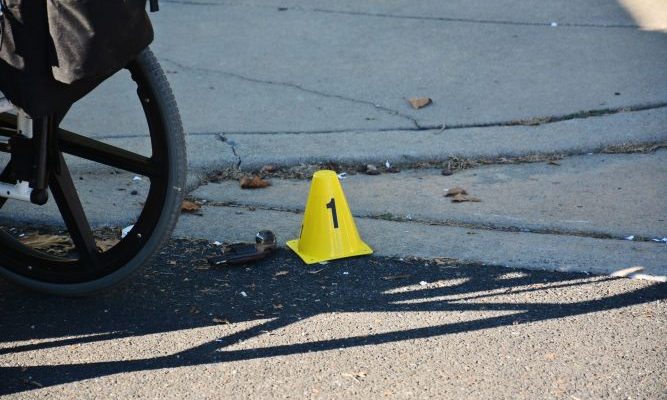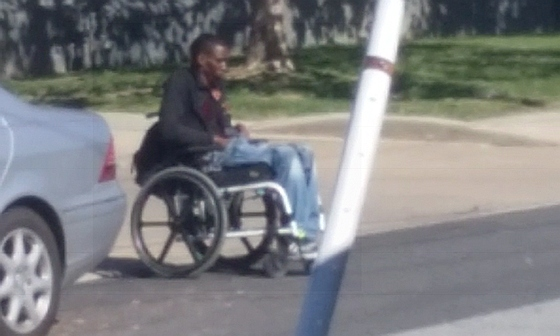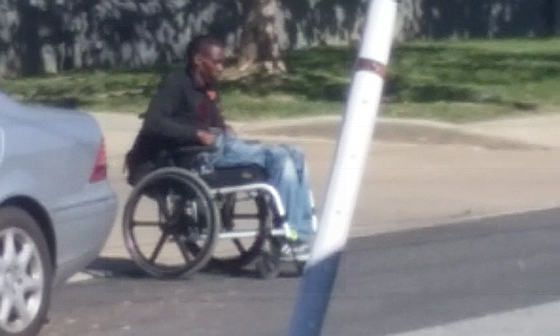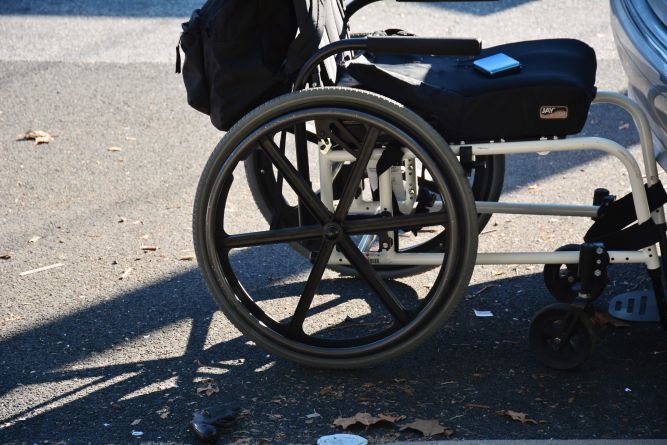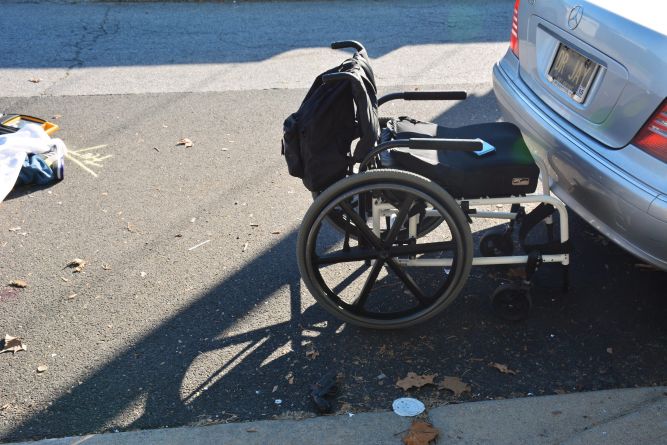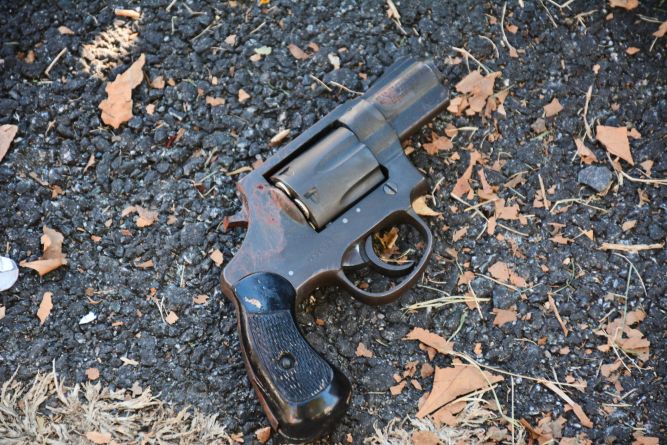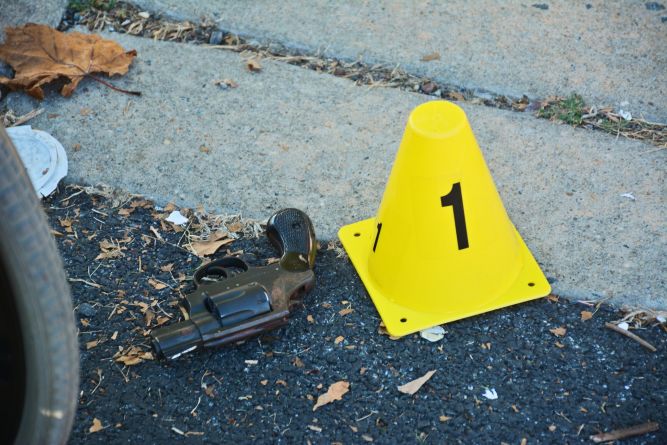Below is the Delaware Department of Justice report on the 2015 Jeremy McDole officer-involved shooting. On July 28, 2020, a series of photos were added to the report with the following statement:
“The following photographs were not included on this page at the time of its original publication; in the interest of transparency, the DOJ updated this page on July 28, 2020 to include those photos after their omission was brought to our attention.”
Report
Four Wilmington Police Department officers shot Jeremy McDole on September 23, 2015. The Delaware Department of Justice (DOJ) undertook an investigation to determine whether any of the four officers should be charged with a criminal offense. As detailed in this report, DOJ also examined whether, notwithstanding any potential violations of criminal law, there were deficiencies in the Wilmington Police Department’s policies and/or training that should be corrected in light of Mr. McDole’s shooting, to ensure that similar incidents do not occur in the future.
- Our investigation revealed serious deficiencies in the way in which the Wilmington Police Department prepares its police officers to deal with situations like the one that Mr. McDole presented, specifically with regard to use of force policies and training and policies for dealing with individuals with mental illness, disabilities, or cognitive impairments. Most significantly, we find that the “continuum of force” provisions of the Wilmington Police Department’s use of force policy are effectively meaningless for police officers as currently written.
- With respect to three of the four officers – Senior Corporal (S/Cpl) Daniel Silva, Corporal (Cpl) Thomas Lynch, and Corporal (Cpl) James MacColl – DOJ did not find probable cause to charge them with a criminal offense. Through our investigation, we determined that these three officers believed – at the moment they discharged their firearms – that doing so was necessary to protect themselves, or others, against death or serious physical injury. Because of that belief, they were entitled under Delaware law to use deadly force to subdue Mr. McDole. Under Delaware’s deferential legal standard for the use of deadly force by a law enforcement officer, their subjective belief that using deadly force was necessary to protect themselves or others immunizes them from criminal responsibility.
- With respect to the fourth police officer who discharged his firearm, Senior Corporal (S/Cpl) Joseph Dellose, the Attorney General did believe that the state should attempt to gather sufficient evidence to pursue a felony assault charge, based upon S/Cpl Dellose’s conduct in immediately confronting Mr. McDole rather than communicating with officers who S/Cpl Dellose knew were already on the scene, and discharging his shotgun in the manner that he did. However, after hiring a former federal prosecutor from Pennsylvania to prepare a case for possible criminal prosecution and after consulting with two nationally recognized police use-of-force experts who had recently recommended criminal charges against the Cleveland police officer who shot Tamir Rice, and after receiving opinions from both of those experts that S/Cpl Dellose’s actions did not constitute criminal conduct under the Delaware Code, DOJ concluded that it could not proceed with a criminal prosecution against S/Cpl Dellose given that the defense would present unchallenged expert testimony that S/Cpl Dellose’s conduct was reasonable.
- Although DOJ is not able to pursue criminal charges against S/Cpl Dellose, it is DOJ’s position that S/Cpl Dellose’s conduct in this case was extraordinarily poor police work that endangered both the public and his fellow officers. DOJ does not believe that S/Cpl Dellose should be employed by the Wilmington Police Department in any role where he would be carrying a firearm in public.
911 Audio

Audio of the 911 call made on September 23, 2015 by a woman shopping at AutoZone. Part of this audio file was previously released by Wilmington Police. Names of people the caller is speaking to at her location while she is on the call have been redacted.

Audio of communications between Wilmington Police dispatchers (WILCOM) and WPD officers starting from the first report of the incident with Mr. McDole and continuing for the period when the channel is restricted to only communications about the incident. It includes conversations leading up to the shooting of Mr. McDole and communications with officers on the scene afterwards, and ends when WILCOM returns the channel to citywide communications, however reports and transmissions about a second shooting incident in a different part of the city can be heard toward the end of the recording.
Scope of Investigation
The scope of the investigation into Mr. McDole’s death was much broader than the scope of prior investigations that have been undertaken by DOJ regarding police-involved shootings. There were a number of reasons for this. First, this case was the first police-involved shooting since Attorney General Denn assumed responsibility in January 2015 where there was a bona fide question as to whether the individual who was shot was armed with a weapon at or around the time of the shooting. This created a need for a broader factual investigation. Second, concerns were raised by Mr. McDole’s family as to (among other things) (1) the integrity of the scene of the shooting (and, in particular, whether evidence may have been placed at the scene by Wilmington Police Department officers), (2) the possibility of prior contact between Mr. McDole and one or more of the officers involved, and (3) the possibility of additional video of the incident. All of these issues had to be thoroughly investigated by DOJ investigators, in addition to their investigation of the shooting incident itself. Third, a decision was made early in the investigation that, notwithstanding any issues of criminal liability, the shooting raised serious questions about the Wilmington Police Department’s preparation of its officers, which DOJ should attempt to address through the use of outside experts for the future benefit of both the Wilmington Police Department and other Delaware police departments. All of these factors resulted in an investigation that was more extensive than other investigations of police-involved shootings.
Finally, the preliminary conclusion that DOJ should attempt to gather sufficient evidence to pursue a felony assault charge against S/Cpl Dellose required that DOJ (a) recruit, hire, and deputize a former federal prosecutor who was not a member of the Delaware bar to prepare the case for possible presentation to a Delaware grand jury, and (b) consult with two national experts with respect to police conduct who had supported criminal charges against a Cleveland police officer with respect to the shooting of Tamir Rice, in order to determine whether the facts collected by DOJ were sufficient to initiate a criminal prosecution against S/Cpl Dellose. DOJ first consulted with Jeffrey Noble, former Deputy Chief of the Irvine Police Department in California, who has been involved in over one thousand police use-of-force investigations and, in November 2015, authored an expert opinion on behalf of Tamir Rice’s family that criticized the expert opinions of the Cleveland District Attorney and argued that the Cleveland police officer who shot Tamir Rice should be held responsible for his death. After reviewing all of the materials in the McDole case, Mr. Noble told DOJ that, in his expert opinion, S/Cpl Dellose’s conduct did not violate Delaware’s criminal statute. After receiving Mr. Noble’s opinion, DOJ solicited a second opinion from Roger Clark, the former head of the Los Angeles Sheriff’s Department’s North Regional Surveillance and Apprehension Team. Mr. Clark has been retained as a consulting expert 1,400 times, the majority of times for cases involving the use of force, and like Mr. Noble, authored an expert opinion last year on behalf of Tamir Rice’s family that criticized the expert opinions of the Cleveland District Attorney and argued that the Cleveland police officer who shot Tamir Rice should be held responsible for his death. Like Mr. Noble, Mr. Clark reviewed all of the materials in this case, and told DOJ that, in his expert opinion, S/Cpl Dellose’s conduct did not violate Delaware’s criminal statute.
DOJ’s investigation included:
- In the days immediately after the shooting, a broad-based neighborhood canvass involving multiple DOJ investigators to locate eyewitnesses, video or audio evidence, or any other information that would help DOJ prosecutors to understand all relevant facts from the incident in which Mr. McDole was shot. This canvass was accompanied by a public request through traditional media and social media for persons with information to come forward.
- Ballistic evidence was analyzed by Carl M. Rone of the Delaware State Police Forensic Firearms Services Unit. The evidence itself was gathered by the Wilmington Police Department and the Delaware Division of Forensic Science from the crime scene.
- Performance of an autopsy by the Delaware Medical Examiner’s office. This autopsy, which was received by DOJ on January 28, 2016, included a post-mortem toxicology report.[1]
- Interviews of Wilmington Police Department officers who were at the scene of Mr. McDole’s shooting and civilian witnesses. Some of these interviews were conducted by Wilmington Police Department officers and observed by DOJ investigators, others were conducted jointly between DOJ and WPD officers, and some were conducted by DOJ investigators outside the presence of WPD officers.
- Interviews by DOJ of members of Mr. McDole’s family (accompanied by their legal counsel), followed by interviews of persons identified by those family members as potentially having relevant knowledge.
- Subpoenaing and reviewing thousands of pages of documents from the Wilmington Police Department, and hundreds of pages of documents from other third parties.
- Microscopic examination of swabs taken from Mr. McDole’s hands by the R.J. Lee group, an independent laboratory. The swabs themselves were gathered by the Wilmington Police Department at the scene
- Video evidence, including a version of the cell phone video processed by the Federal Bureau of Investigation, providing a detailed review of the images captured by the cell phone video.
- Collection and review of video evidence from multiple stationary locations in the area of Mr. McDole’s shooting.
- Retention of experts in police policies and training to review the policies and trainings of the Wilmington Police Department, in order to identify any relevant deficiencies relating to the incident involving Mr. McDole.
- Retention of an attorney from the Pennsylvania bar (a former federal prosecutor) sworn as a Delaware DOJ Special Deputy Attorney General to prepare the case for possible prosecution, in order to avoid any real or perceived conflicts presented by DOJ prosecutors presenting a case involving criminal charges against a Wilmington Police Department officer.
- Retention of two national experts in police practices to determine whether, if charges were filed, the State could rebut expert testimony expected from the defendant officer with respect to the justification of his conduct under Title 11, Section 464 of the Delaware Code. As noted above, the national experts retained by DOJ were the two experts retained by Tamir Rice’s family who recommended criminal charges against a police officer in Cleveland, Ohio for the police shooting incident that led to Tamir Rice’s death.
Full Report of the Department of Justice on Wilmington Police Department Use of Force
Videos
Because of content, users may need to take YouTube out of “Restricted Mode” to view.
CAUTION – This video is very graphic. Viewer Discretion Is Advised.
Original Cellphone Video – This is the footage of the incident that a witness recorded using a cellphone.
Processed Cellphone Video – This is footage recorded on the witness’ cellphone that has been processed by the Federal Bureau of Investigation for detailed viewing of the incident, showing the movement of Mr. McDole in the moments just before the second shots fired by police.
Downtown Visions Camera – Surveillance video footage from a camera operated by Downtown Visions camera at the intersection of Second and North Rodney streets, which shows Mr. McDole intermittently in front of a home on Rodney Street at 11:59 a.m., 12:11 p.m., 12:32 p.m., 12:52 p.m., and 12:56 p.m. on Sept. 23, 2015.
Auto Zone – Surveillance camera footage from the Auto Zone store parking lot (1800 Lancaster Avenue), facing Lancaster Avenue from 3 p.m. to 3:30 p.m. on Sept. 23, 2015. This camera does not have footage of the officers or Mr. McDole.
Euro Garage 1 – Surveillance video footage from the Eurocar 2000 auto repair shop at 100 S. Lincoln St. from 3 to 3:30 p.m. on Sept. 23, 2015. This camera faces the intersection of South Lincoln and Tulip streets. Wilmington Police Officer Joseph Dellose is shown arriving on Tulip Street in his police car and exiting the vehicle, obtaining a shotgun and then running toward Mr. McDole (who is not visible) between 3:15 and 3:16 p.m.
Euro Garage 2 – Surveillance video footage from the Eurocar 2000 auto repair shop at 100 S. Lincoln St. from 3 to 3:30 p.m. on Sept. 23, 2015. This camera faces Tulip Street. Wilmington Police Officer Joseph Dellose runs through the screen carrying his department-issued shotgun at 3:16 p.m. and other Wilmington officers are shown arriving shortly thereafter.
Euro Garage 3 – Surveillance video footage from the Eurocar 2000 auto repair shop at 100 S. Lincoln St. from 3 to 3:30 p.m. on Sept. 23, 2015. This camera faces an alley and does not have footage of the officers or Mr. McDole.
Liberty Gas Station 1 – Surveillance video footage from the Liberty Gas Station, located at 1816 Lancaster Ave. Two of the feeds in this video are from cameras on the back of the gas station, facing Tulip Street. The footage shows onlookers and movements of Wilmington police officers, but does not show the incident or any footage of Mr. McDole. The feeds from the other two cameras in this footage show the gas station’s front entrance and pizza counter. The time stamp on these videos is several minutes behind those from Euro Garage.
Liberty Gas Station 2 – Surveillance video footage from the Liberty Gas Station, located at 1816 Lancaster Ave. This camera, stationed outside the gas station, shows the area around the front entrance to the gas station. There is no footage of the incident but does show individuals reacting after the incident. The time stamp on this video is several minutes behind those from Euro Garage.
Photos
Images taken from cellphone video that was enhanced by the Federal Bureau of Investigation, showing Mr. McDole’s movements just before a fatal series of shots fired by police officers.
The following photographs were not included on this page at the time of its original publication; in the interest of transparency, the DOJ updated this page on July 28, 2020 to include those photos after their omission was brought to our attention.

